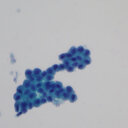Lithuanian
Albanian
Arabic
Armenian
Azerbaijani
Belarusian
Bengali
Bosnian
Catalan
Czech
Danish
Deutsch
Dutch
English
Estonian
Finnish
Français
Greek
Haitian Creole
Hebrew
Hindi
Hungarian
Icelandic
Indonesian
Irish
Italian
Japanese
Korean
Latvian
Lithuanian
Macedonian
Mongolian
Norwegian
Persian
Polish
Portuguese
Romanian
Russian
Serbian
Slovak
Slovenian
Spanish
Swahili
Swedish
Turkish
Ukrainian
Vietnamese
Български
中文(简体)
中文(繁體)
Journal of Ethnopharmacology 2019-Aug
Straipsnius versti gali tik registruoti vartotojai
Prisijungti Registracija
Nuoroda įrašoma į mainų sritį
Išsamiausia vaistinių žolelių duomenų bazė, paremta mokslu
- Dirba 55 kalbomis
- Žolelių gydymas, paremtas mokslu
- Vaistažolių atpažinimas pagal vaizdą
- Interaktyvus GPS žemėlapis - pažymėkite vaistažoles vietoje (netrukus)
- Skaitykite mokslines publikacijas, susijusias su jūsų paieška
- Ieškokite vaistinių žolelių pagal jų poveikį
- Susitvarkykite savo interesus ir sekite naujienas, klinikinius tyrimus ir patentus
Įveskite simptomą ar ligą ir perskaitykite apie žoleles, kurios gali padėti, įveskite žolę ir pamatykite ligas bei simptomus, nuo kurių ji naudojama.
* Visa informacija pagrįsta paskelbtais moksliniais tyrimais



